Scotch Thistle
Scotch Thistle
(Onopordum acanthium L.)
Asteraceae (Sunflower Family)
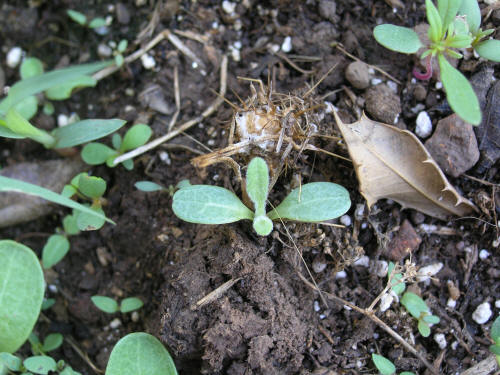
▲ ▼ scotch thistle seedlings

▲ ▼ scotch thistle seedlings, young plants
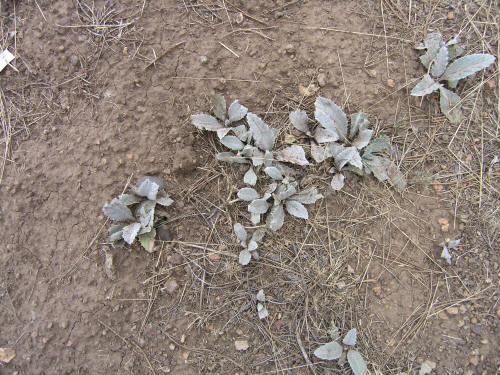
▲ ▼ scotch thistle seedlings, young plants
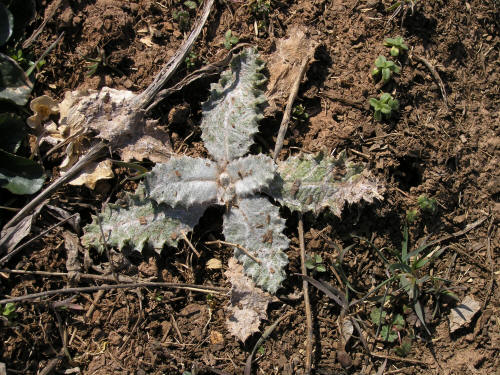
▲ ▼ scotch thistle seedlings, young plants
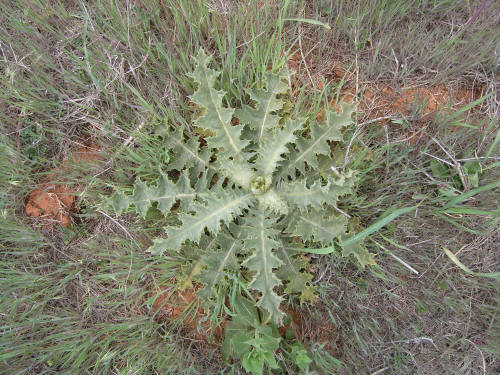
▲ ▼ scotch thistle seedlings, young plants
▲ ▼ scotch thistle seedlings, young plants
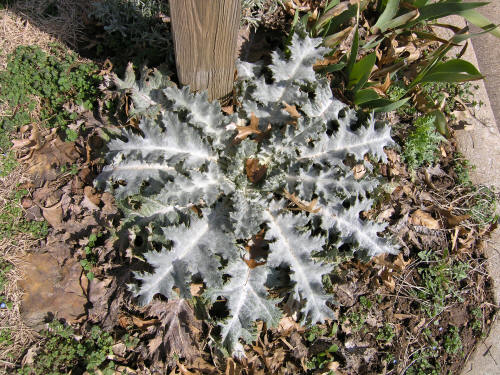
▲ ▼ first year plants with woolly leaves
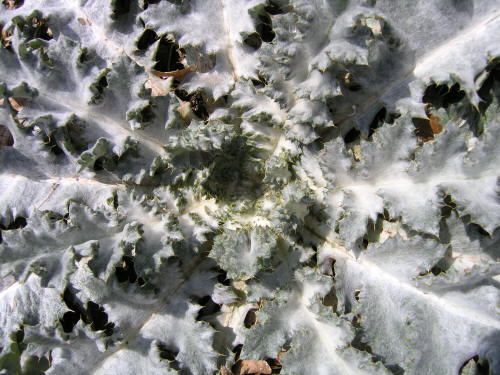
▲ center of first year plant rosette showing dense white hairs
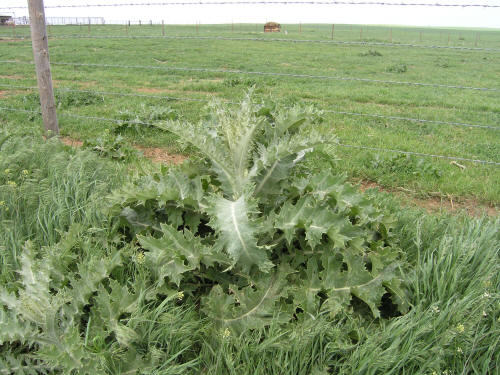
▲ ▼ second-year plant beginning to elongate flowering stem; lower leaves on above plant are nearly 2 feet long
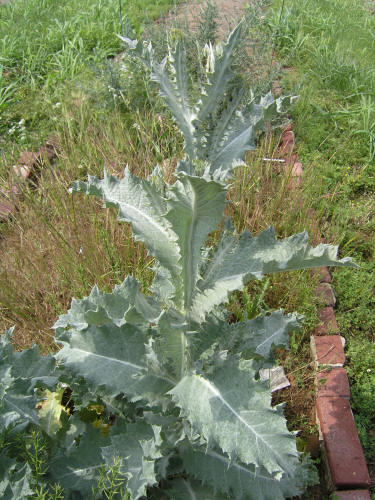
▲ second-year plant beginning to elongate flowering stem
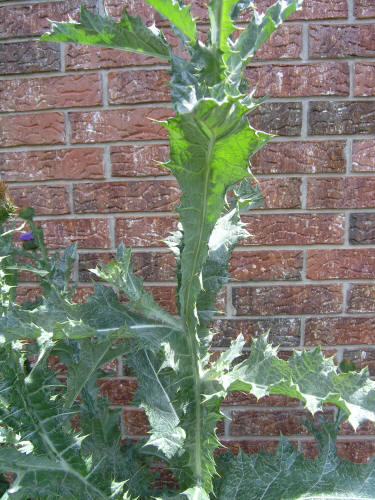
▲ ▼ wide, continuous, spine-edged wings on stem help distinguish Scotch Thistle from other large thistles
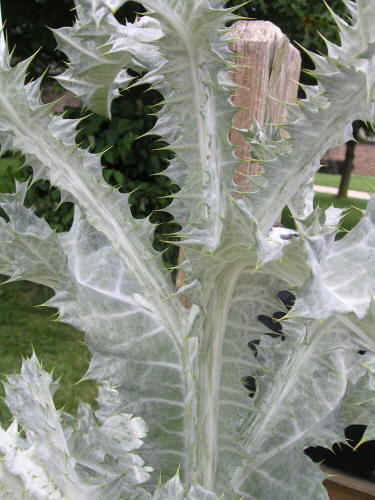
▲ ▼ wide, continuous, spine-edged wings on stem
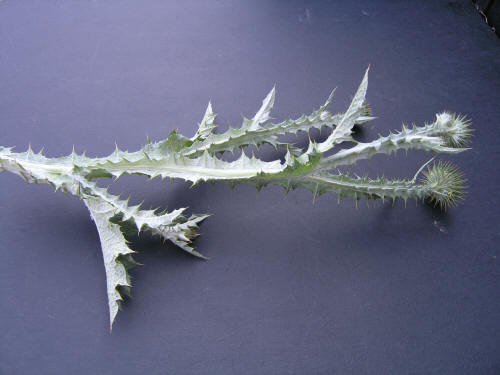
▲ wide, continuous, spine-edged wings on stem help even up to base of inflorescences

▲ hollow stems
▲ ▼ mature, flowering plants (late July) in Colorado, about 6 feet tall and almost as wide
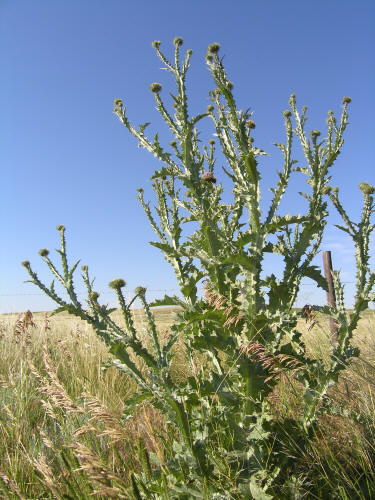
▲ mature, flowering plant in western Nebraska
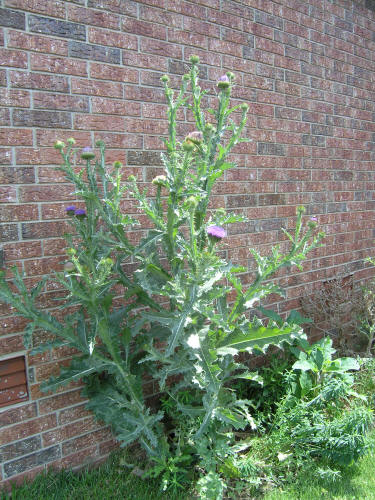
▲ mature, flowering plant in Warnemunde, Germany

▲ ▼ mature, flowering plant
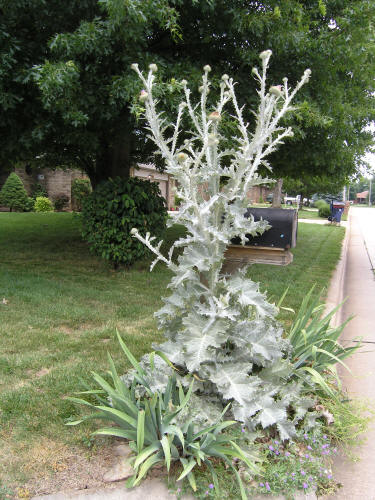
▲ ▼ mature, flowering plant
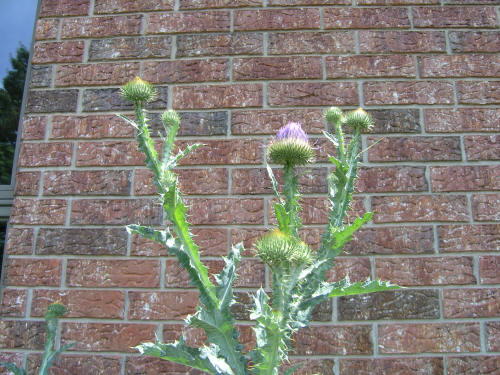
▲ mature, flowering plant, again showing spiny, winged stems
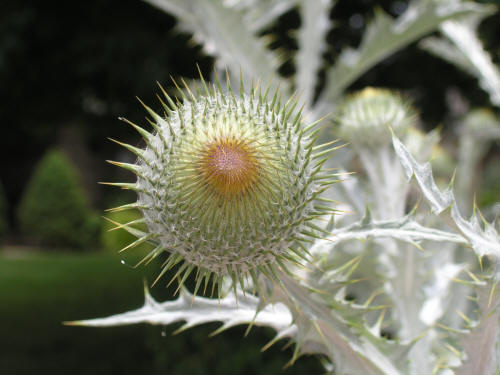
▲ inflorescence in bud
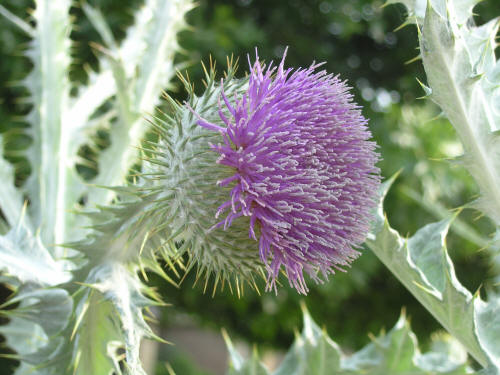
▲ ▼ inflorescences, showing round-spine-tipped bracts below inflorescence
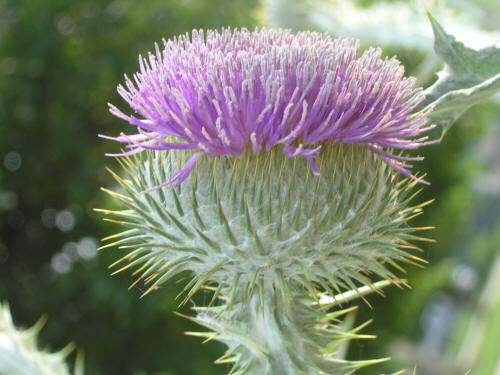
▲ ▼ inflorescences
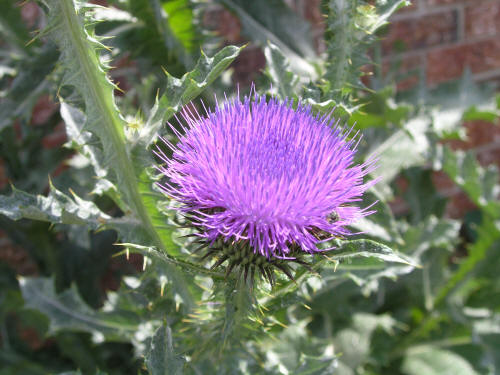
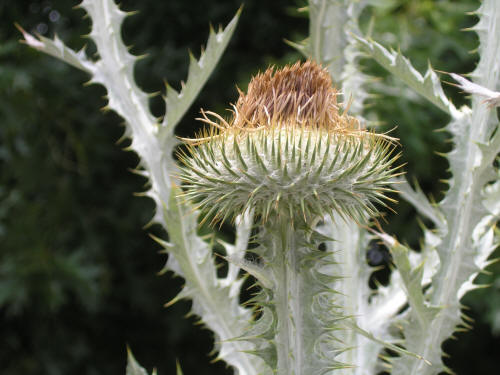
▲ flattened receptacle during flowering senesecence
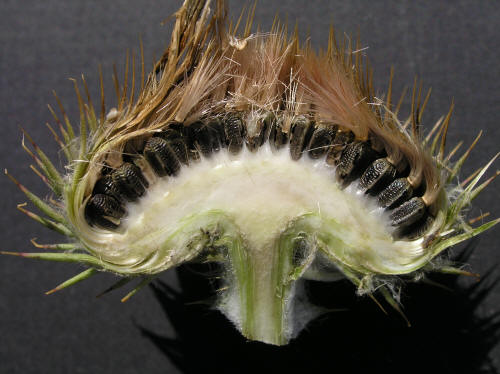
▲ ▼ inflorescence receptacle, showing pits that hold seeds/achenes
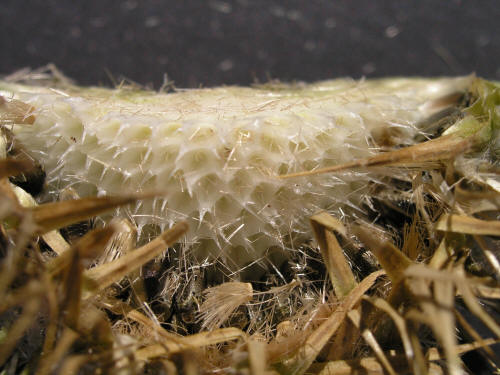
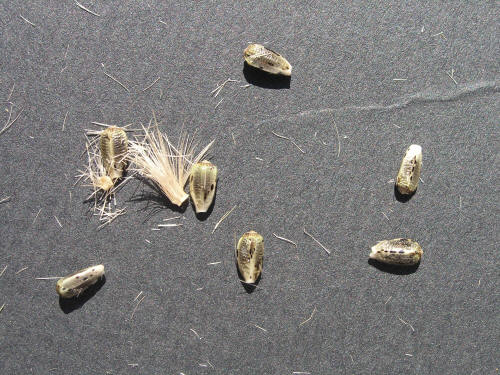
▲ seeds
Scotch Thistle
- noxious weed in Missouri, but not very common; mostly in eastern Missouri
- biennial
- strongly winged stems with long spines on "wings"
- strongly branched, 2-8' tall, usually larger and coarser appearing than other thistles
- basal rosette leaves have fleshy, greyish with whitish-cottony appearance from hairs
- mature leaves, stems covered with dense white hairs, giving plant a grayish appearance
- receptacle at base of head inflorescence is fleshy and pitted once seeds are removed
- can distinguish from tall thistle, bull thistle, musk thistle and field thistle by the pitted receptacle, usually white-woolly leaf and stem appearance and winged stems on scotch thistle
- can distinguish from canada thistle by the presence of creeping roots and much small flower head on canada thistle
- Initiating a biological control evaluation program in California